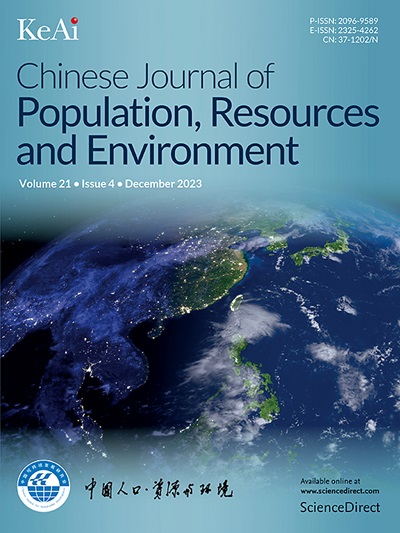The effects of population aging on industrial structure upgrading: Empirical analysis of provincial and threshold characteristics in China
IF 4.8
4区 环境科学与生态学
Q2 ENVIRONMENTAL STUDIES
Chinese Journal of Population Resources and Environment
Pub Date : 2024-09-01
DOI:10.1016/j.cjpre.2024.09.014
引用次数: 0
Abstract
Global population aging trends are intensifying, presenting multifaceted economic and social challenges for countries worldwide. As the world’s largest developing country, China has entered a phase of extreme demographic aging, posing significant questions about its impact on the ongoing upgrading of industrial structures. How does this demographic shift influence the upgrading of industrial structures, and does technological innovation mitigate or exacerbate this impact? The empirical results indicate that population aging impedes upgrading the industrial structure, while technological innovation positively affects the relationship between the two. Moreover, using technological innovation as a threshold variable, the impact of population aging on industrial structure upgrading evolves in a “gradient” manner from “impediment” to “insignificant” to “promotion” as the technological innovation levels increase. These findings offer practical guidance for tailoring industrial policies to different stages of technological advancement.
人口老龄化对产业结构升级的影响:中国省份和门槛特征的实证分析
全球人口老龄化趋势日益加剧,给世界各国带来了多方面的经济和社会挑战。作为世界上最大的发展中国家,中国已进入人口极度老龄化阶段,这对正在进行的产业结构升级产生了重大影响。人口结构的变化如何影响产业结构的升级,技术创新是减轻还是加剧了这种影响?实证结果表明,人口老龄化会阻碍产业结构升级,而技术创新则会对两者之间的关系产生积极影响。此外,以技术创新为临界变量,随着技术创新水平的提高,人口老龄化对产业结构升级的影响呈 "梯度 "演变,从 "阻碍 "到 "不显著 "再到 "促进"。这些发现为针对不同技术进步阶段制定产业政策提供了实际指导。
本文章由计算机程序翻译,如有差异,请以英文原文为准。
求助全文
约1分钟内获得全文
求助全文
来源期刊

Chinese Journal of Population Resources and Environment
ENVIRONMENTAL STUDIES-
CiteScore
4.30
自引率
1.10%
发文量
791
审稿时长
79 days
期刊介绍:
The Chinese Journal of Population, Resources and Environment (CJPRE) is a peer-reviewed international academic journal that publishes original research in the fields of economic, population, resource, and environment studies as they relate to sustainable development. The journal aims to address and evaluate theoretical frameworks, capability building initiatives, strategic goals, ethical values, empirical research, methodologies, and techniques in the field. CJPRE began publication in 1992 and is sponsored by the Chinese Society for Sustainable Development (CSSD), the Research Center for Sustainable Development of Shandong Province, the Administrative Center for China's Agenda 21 (ACCA21), and Shandong Normal University. The Chinese title of the journal was inscribed by the former Chinese leader, Mr. Deng Xiaoping. Initially focused on China's advances in sustainable development, CJPRE now also highlights global developments from both developed and developing countries.
 求助内容:
求助内容: 应助结果提醒方式:
应助结果提醒方式:


